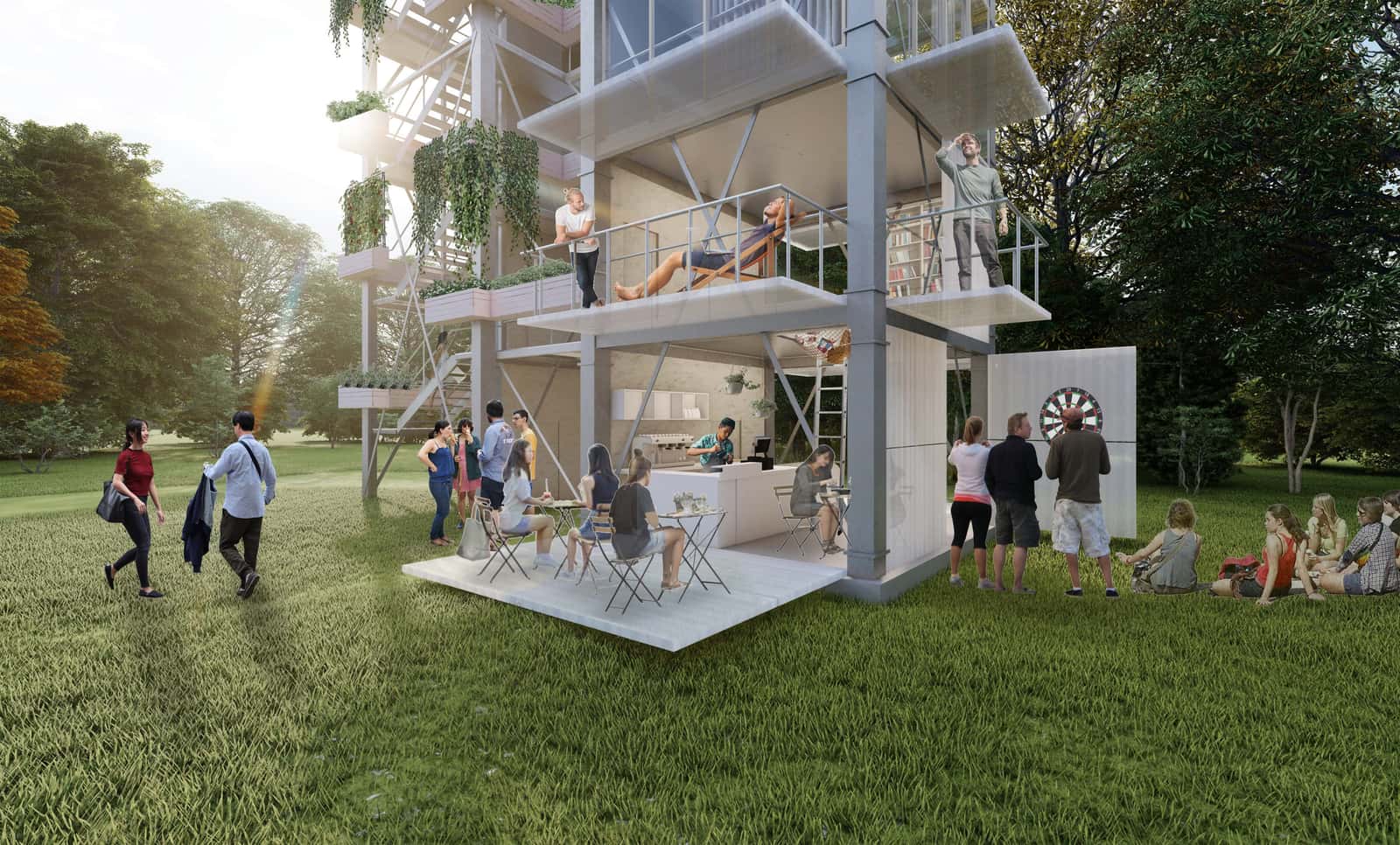Downloads
DOI:
https://doi.org/10.47982/spool.2022.2.03Keywords:
Adaptive architecture, Spatial praxis, Inclusive processes, Flexible interrelationships, Open mesh, Cultural techniqueAbstract
Since industrialization, modern architecture has appropriated the notion of adaptation. Defined as the adjustment of a building to the environment and its users, architectural adaptation has been mainly carried out via a narrow technological approach. Thus, digitalization has emerged as the latest ‘smart’ update. The limits of technological adaptation become especially evident with architecture in aiming to solve an ecological and social crisis on both a global and local level. In this paper, we argue for reconceptualizing adaptivity in architecture to (re)integrate processual, social, and aesthetic dimensions. We propose a new architectural understanding of adaptivity that includes currently excluded agents and involves them in communication and adaptation processes. As we focus on the intertwining of technical developments and cultural practices, that is, the interactions of human and non-human agents in architecture, we seek to describe architectural adaptation as an inclusive spatial praxis. This may aid in inventing new ways of life built upon sustainable nature-culture-technology relationships within society.
How to Cite
Published
Issue
Section
References
CRC Collaborative Research Centre, 1244 (2017). Demonstrator. Retrieved March 31, 2021 from https://www.sfb1244.uni-stuttgart.de/en/demonstrator/
Faegre, T. (1980). Tents. Architecture of the nomads. Knopf Doubleday Publishing Group.
Fox, M. (2016). Interactive architecture. Adaptive world. Princeton Architectural Press. New York.
Fudala, T. (2021, May 18). House Hansen, Szumin by Hansen [Lecture session]. Lecture series Prof. Putz, TU Munich
Hansen, O. (2005). Towards open form. Ku formie otwartej. Fundacja Galerii Foksal.
Hansen. O. (2014). Open Form in Architecture – The Art of the Great Number. In: Wieder, A. J. & Zeyfang, F. Open form: Space, interaction, and the tradition of Oskar Hansen. Künstlerhaus Stuttgart, pp. 43-45. (French original work published 1961)
Harrison, A. L. (2013). Architectural theories of the environment. Posthuman territory. Hoboken.
Hinte, E. van, Neelen, M., Vink, J., Vollaard, P. (2003). Smart architecture. 010 Publisher.
Glissant, É. (2020). Introduction to a poetics of diversity. Liverpool. (French original work published 1995)
Kolarevic, B. & Parlac, V. (2015). Building dynamics: Exploring architecture of change. Routledge. https://doi.org/10.4324/9781315763279
Kronenburg, R. (2007). Flexible: Architecture that responds to change. Laurence King.
Latour, B. (2004). Politics of nature. How to bring the sciences into democracy. Cambridge.
Morton, T. (2009). Ecology without nature. Harvard.
Morton, T. (2010). Guest column: Queer ecology. PMLA, 125 (2), 273-282. http://www.jstor.org/stable/25704424
Nawratek, K. (2015). Radical inclusivity. Architecture and urbanism. dpr-barcelona
Schmidt III, R. & Austin, S. (2016). Adaptable architecture: Theory and practice. Routledge.
Scott F.D., (2014). Future adaptability. In Wieder, A. J. & Zeyfang, F. (Eds.), Open form: Space, interaction, and the tradition of Oskar Hansen. Künstlerhaus Stuttgart, pp. 34-42.
Siegert, B. (2015) Cultural techniques. Grids, filters, doors, and other articulations of the real. Fordham University Press.
Tanizaki, J. (1977). In praise of shadows. Stony Creek. (Original work published 1933).
Taut, B. (1937). Houses and people of Japan. The Sanseido Co.
Ulber, M. & Mahall, M. (2019). Adaptive architecture as mediator between humans and earth. In: Agathón | International Journal of Architecture, Art and Design, Vol. 6, pp. 94-103.
Ulber, M. Mahall, M. Serbest, A. (2021). Environments. Actions of adaptation in architecture. In: Loci Communes | International Journal of Studies on Spaces in Arts and Humanities, Anthropology and Architecture, Vol. 1.
Wieder, A. J. & Zeyfang, F. (2014). Open form: Space, interaction, and the tradition of Oskar Hansen. Künstlerhaus Stuttgart.
Wielocha, A. & Kędziorek, A. (2016). Preserving the open form. The Oskar and Zofia Hansen house in Szumin. Between architecture and contemporary art, Studies in Conservation, 61(2), pp. 248-254.
Woliński, M. (2014). Building activity, sculpting communication. In: Wieder, A. J. & Zeyfang, F. Open form: Space, interaction, and the tradition of Oskar Hansen. Künstlerhaus Stuttgart, pp. 18-31.
Young, M. & Young, D. (2012). Introduction to Japanese architecture. Tuttle Publishing.





